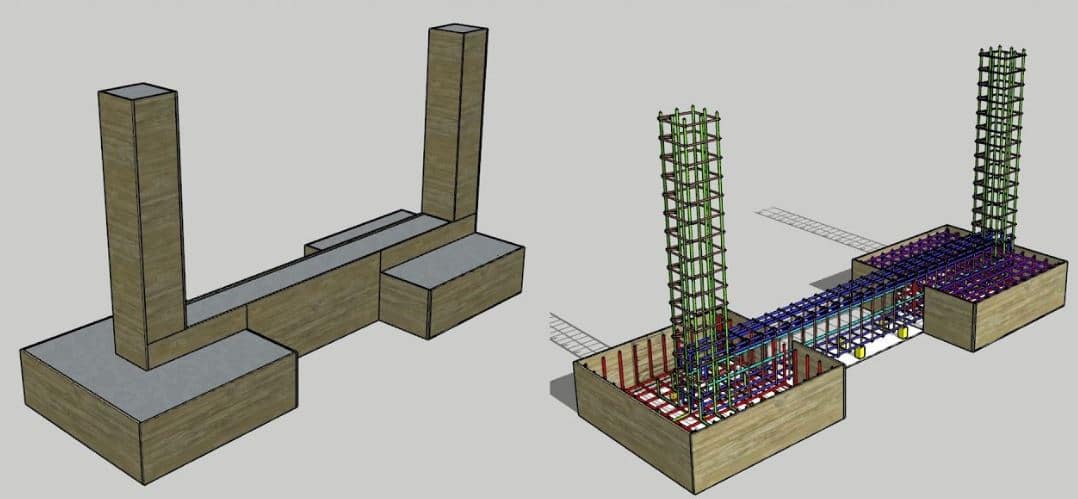Strip foundation is the most commonly used type of foundation throughout the world and is used as a shallow foundation, mainly in buildings and associated works.
A strip foundation is also known as a strip foundation or strip foundation.
What is a strip foundation?
It is a type of foundation designed and constructed to support superstructure elements such as steel or concrete columns, walls, etc. It is the most used type of construction in which a structure rests on the ground.
Construction costs are low and quality assurance and control are simpler compared to other foundations such as cast-in-place bored piles.
Types of spread foundation
Types of foundations can be listed below.
- Wall foundations
- Insulated foundations
- Belt foundation
- The base of the raft
- “Inverted T” type foundations
Wall foundations
The simplest type of foundation is built in construction. The wall foundation can be a concrete or gravel foundation.
Wall foundations are generally random rubble foundations unless there are special loads on the foundation. A reinforced concrete beam is located on top of the wall foundation to minimize foundation settlement due to load fluctuations or soil conditions.
Wall foundations are designed for linear loads. A break in the wall creates additional stress on the foundation. For a one-story building, this stress is negligible.
Isolated support
Insulated foundations, also known as columnar foundations, are the most commonly used type of shallow foundations throughout the world. Furthermore, due to the simplicity of shallow foundations, the design and construction are simpler compared to other types of foundations.
The construction of this type of strip foundation is complicated. There are several steps to follow.
- Calculate the size of the foundation based on the applied load and the allowable bearing capacity.
A=F/ σ where A – foundation area, F – column load (utilization limit state) and σ – allowable load capacity
- Calculate the pressure under the foundation at the ultimate limit state
σ u = P/A were, σ u – Maximum pressure under the foundation, P – Maximum axial load
- Calculate the bending moment in front of the column and determine the reinforcement.
- Check whether reinforcing strapping is necessary.
- Check the vertical shear line in front of the bracket. It must be lower than the maximum allowable shear stress in concrete.
- Check the punching capacity of the foundation. The article drilling scissors For more information you can contact us.
There are types of insulated strip foundations, such as
- Foundations with uniform thickness: The thickness of the foundation remains the same.
- Foundation with different thicknesses: The thickness of the foundation varies and increases towards the pillar. This is an economical method, but the column thickness must be considered as it is crucial. Design errors can occur with this type of foundation.
- Stepped foundations: Instead of embankment, there are steps on top of the foundation. The number of steps may depend on the size of the foundation. Generally, steps are designed to cover the punching shear perimeter, thus increasing the shear strength of the foundation strip.
Strap foot
One of the most difficult types of strip foundations to design is the strip foundation. This type of strip foundation is created at the property line.
When space is limited, we construct buildings on property lines to make the most of the property. When load is applied to the edge of the foundation, an eccentric load is created. This must be taken into account during planning and construction.
We design the so-called strap beam to compensate to some extent for the eccentricity induced in the foundation. This equalizes the pressure in the foundation to some extent. This also reduces foundation settlement.
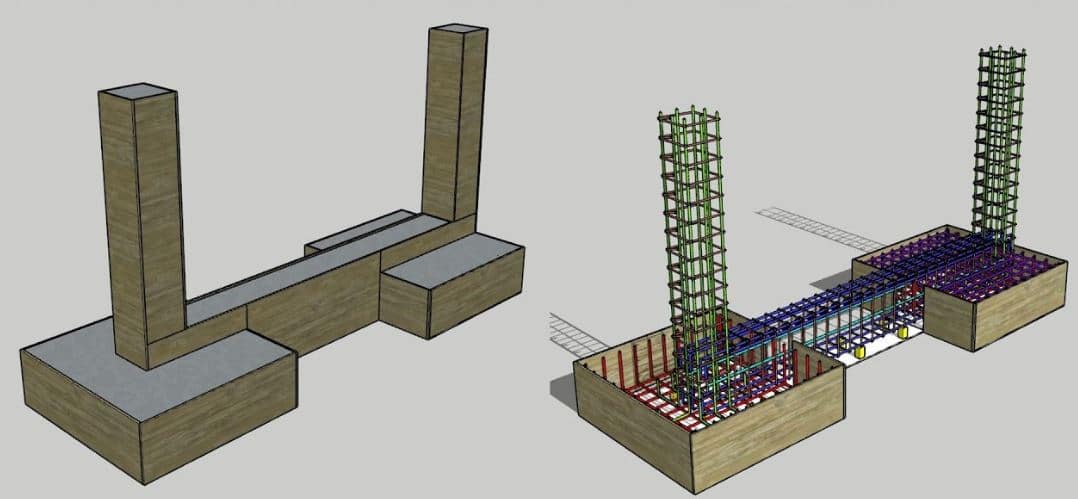
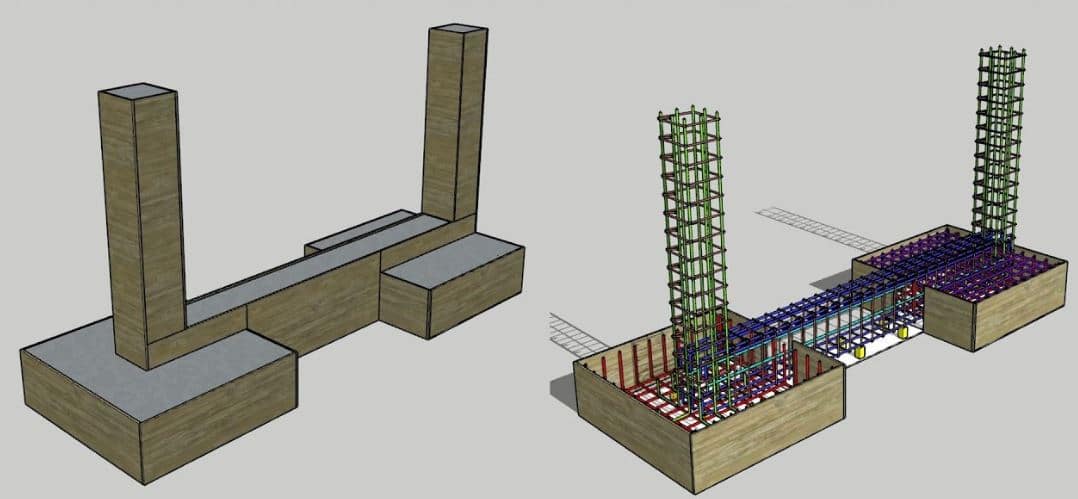
There are different types of strip foundations.
- Storage of support beams in the pillar next to the foundation.
- Belt conveyor that is on another structure, e.g. B. a concrete wall. If the wall cannot support the bending moment caused by the chord beam, the beam-to-wall connection is designed to allow rotation.
- Design a counterweight at the end of the belt beam to compensate for the upward reaction.
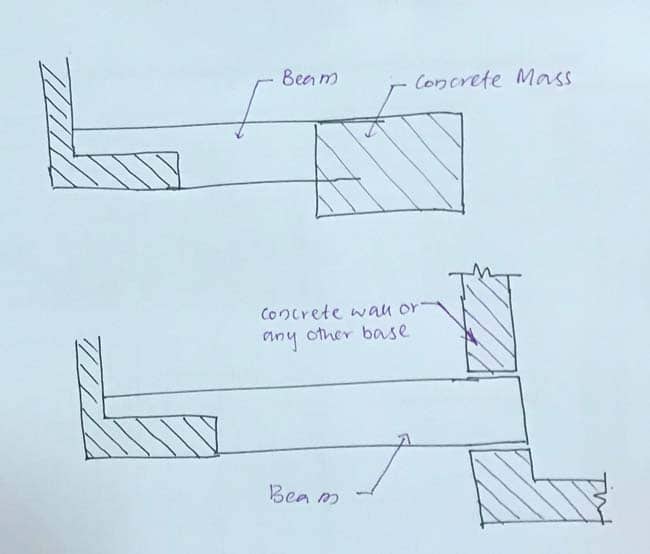
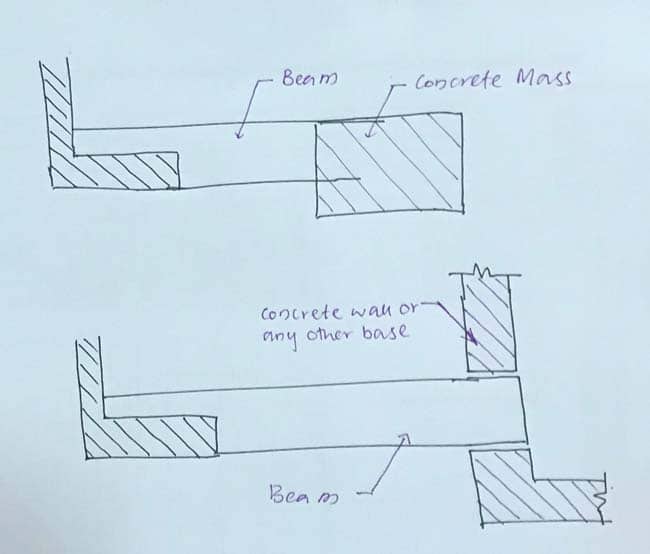
Slab foundations
Raft foundation is also called mat foundation.
A mat foundation is a strip foundation built into the ground. It has a uniform thickness and at pillar locations the foundation thickness can be increased to improve flexural and shear resistance.
The last option for shallow foundations is the slab foundation. As the axial support load increases, the required foundation area also increases. It will be difficult to build the structure on slab foundations. Therefore, when the number of floors in the building increases, the slab foundation option is chosen.
In general, the cost of constructing slab foundations is lower than that of cast-in-place bored piles. Pile foundations incur higher costs for drilling, concreting, etc. Additionally, the construction of floor beams and pile caps increases costs.
The construction of slab foundations is a little more demanding compared to individual foundations. Furthermore, manual design calculations are also complicated. Therefore, the common practice is to use computer-based software to analyze the foundation. The following factors can be taken into consideration during design.
- Calculate the area of the foundation based on the loads at the serviceability limit state and the permissible load capacity.
- The strip foundation is designed for serviceability limit state (SLS) and bearing capacity limit state (ULS). Therefore, calculate the SLS and ULS loads.
- Soil can be modeled as linear deformation. The soil reaction is called the underground reaction. This is used by the computer program to display the soil. There are many methods for calculating the background response. One of the simplest methods is to calculate as flow.
Underground reaction = safety factor x 40 x load capacity . – From the Bowels Foundation book.
This calculation assumes a settlement of 25 mm in the foundation. If the expected settlement is greater, the above equation can be adjusted. The safety factor is that taken into account when calculating the allowable load capacity. This must be used in the equation.
Now we can model the slab foundation. In general, the foundation is a model with shell elements. However, if the thickness is greater, it can be modeled as a plate element.
- Apply loads and create load combinations. Then run the model and get the output.
- The foundation can then be designed for bending and shear.
- Check the width of the crack. Particular attention is required when foundations are built in aggressive environments that can cause chemical attacks.
Inverted T slab foundation
As the column load increases, the area of the individual foundations increases. A larger strip foundation area is required. We then increase the area by placing strip foundations that combine the supports in a single row.
The strip foundation cannot absorb an increase in bending and shear forces because it has a uniform thickness. Furthermore, an increase in the column load leads to an increase in the thickness of the foundation.
Therefore, a beam is added in the middle of the strip foundation and then the “inverted T” foundation is formed.
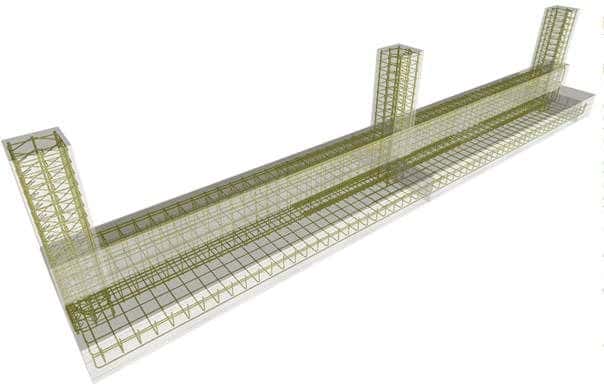
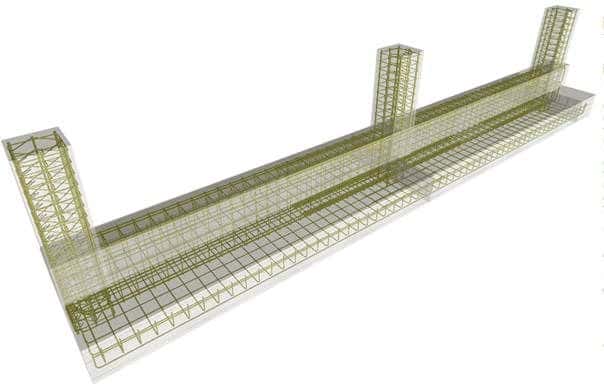
The construction of “inverted T” foundations is not overly complicated. However, the use of calculation aid software makes the analysis more accurate and easier. Soil can be modeled as an underground reaction.
The modeling method determines the type of spring or subsurface response applied to the model. If the foundation is modeled as a linear element by calculating the total stiffness, we need to apply linear springs. If we model the strip foundation as a slab (shell) and the beam as linear elements, we can use surface springs to model the foundation.
Rust foundations
Grid foundations are not a common type of strip foundation. They are designed for specific locations.
A grid structure is constructed to support the superstructure. The grid can be made of steel beams or reinforced concrete.
Additionally, in single-story buildings, floor beams, arranged similar to a grid, are placed to support the walls. Good soil conditions are essential for building this strip foundation.
Inverted arch foundation
This is not common in modern construction with shallow foundations. These types have been used previously. Most older and heavier structures were built on this type of foundation.
The inverted arch represents the strip foundation type. The arch function is used to stiffen the foundation and improve load transfer.
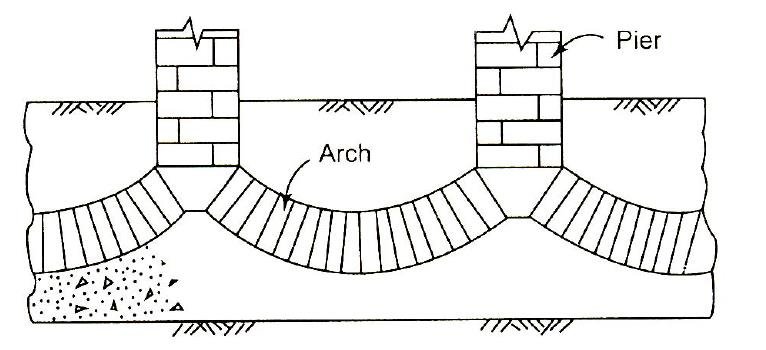
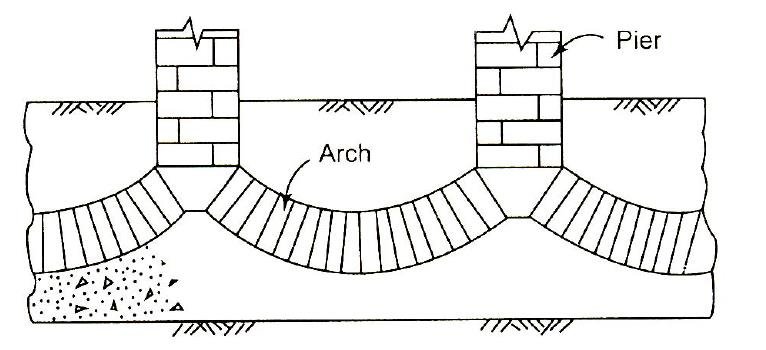
Inverted arch construction was introduced before the invention of concrete. Therefore, bricks or stones were the main building material for inverted arch foundations.
Important Factors to Consider with Spread Foundation
- Responsibility of the civil engineer: Particular attention must be paid to soil types. geotechnical investigation The report indicates the allowable load capacity for the construction of the foundation. It is the responsibility of civil engineers to ensure that all conditions are met in the project.
- Soil improvements: There is weak soil that needed to be improved before construction. Small-scale ground improvement may be necessary for smaller buildings. However, as the size of the project increases, major soil improvement will be required. For more information on this topic, see the article below.
Ground improvement for low-rise buildings
Soil improvements
Soil stabilization
- Ground: In addition, the planner should pay attention to the type of soil when selecting the soil type. The Soil Types article For more information about the different types of soil, see. Furthermore, when constructing strip foundations on expansive soils, the designer must take special precautions regarding upward soil stress.
This would be very critical for foundations with lower axial loads. The upward movement would cause cracks in the structures. This would particularly affect non-structural elements such as brick walls.
To solve these problems, tension beams in small buildings must be designed to resist these upward movements. Reinforcing the tensioned beams would minimize the impact on non-structural elements.
- Clay soil foundation design: Clay under the foundation is a problem for the planner due to the constant settlement caused by the load. Consolidation processing For more information in this area, you can contact us.
The designer must be aware of the extent of resulting settlement in the foundation and take necessary measures to avoid such settlement or design the foundation and superstructure for the expected settlement.
Advantages of strip foundations
- Strip foundations are widely used and more popular due to lower construction costs compared to deep foundations.
- It's easy to build.
- The quality control and assurance processes are easily comparable to Deep Foundations .
Disadvantages of strip foundations
- The main problem with shallow foundations is foundation settlement. As we are building on the land there is some settlement, but if there is other settlement it causes problems with the structures.
- Due to the simplicity of most shallow foundations, there is no adequate construction supervision.
- Due to lack of attention in foundation construction, shallow foundations may fail .
Related articles
- Shallow foundations
- pillar foundation
- Foundations
- Deep foundations
- Foundation failure
- support
- Eccentrically loaded foundations
- Shallow foundation failure
- Pile slab foundations
- mat base
- Foundation pile
- Driven pile foundations
- Pile foundations
- Buoyancy pressure in foundations
- How to determine the type of foundation
- Excavation for foundation
- Foundation waterproofing
- Laying shallow foundations
- Slab foundations

